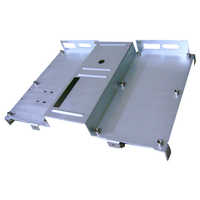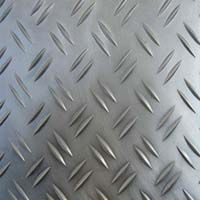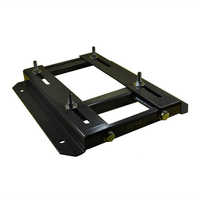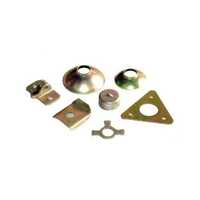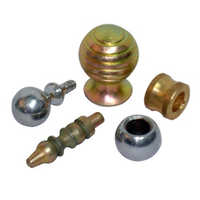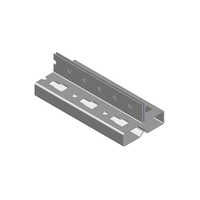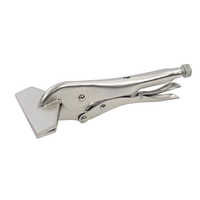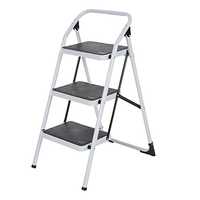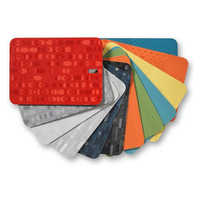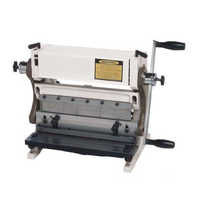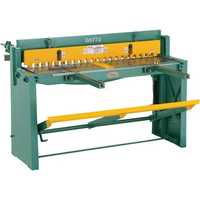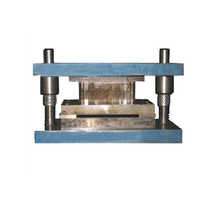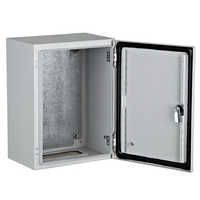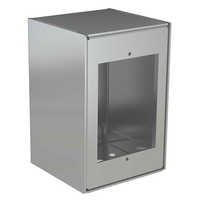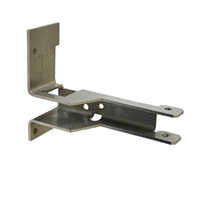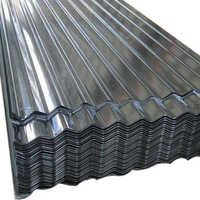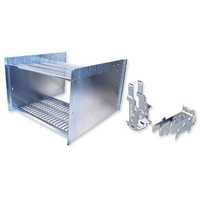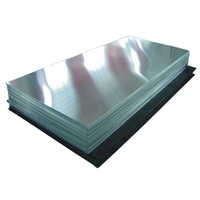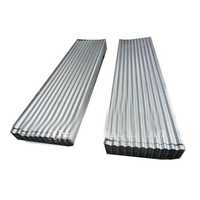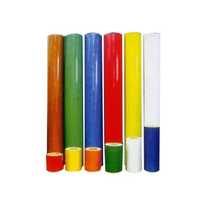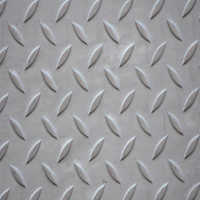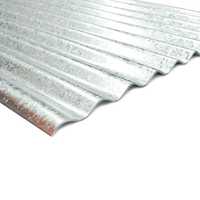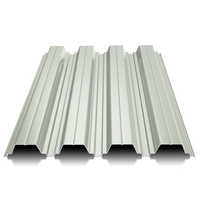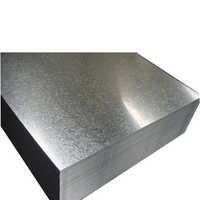Sheet Metal
(10200 products)
Explore More Categories
Made in India
1500x6300 Ruggedly Constructed MS Chequered Plates
Grade - Industrial
3 Years
Business Type: Manufacturer
KESHAV ENGINEERING
Made in India
Available In Various Color Ppgl/Gc Sheet
Price: 1200 INR (Approx.)/Piece
MOQ - 100 Piece/Pieces
Color - Available in Various color
Type - PPGL Sheet
Transparency - No
2 Years
Business Type: Trading Company
Maa Ambey Tube Company
Made in India
Industrial Step Iron Grade: A
MOQ - 1 Piece/Pieces
Material - Iron
Grade - A
Surface Treatment - Powder Coating
2 Years
Business Type: Manufacturer
N I F ISPAT LIMITED
Jsw Silveron plus Bare galvalume BGL Sheets
Price: 90 INR (Approx.)/Kilograms
MOQ - 500 Kilograms/Kilograms
Material - Aluminum, Zinc
Grade - Prime - AZ70, AZ100 and AZ150 GSM Coatings
Surface Treatment - Galvanized
7 Years
Business Type: Manufacturer | Distributor
VIVEK STEELS SKYLINE PVT. LTD.
Indian Inquiries Only
Made in India
Mild Steel Chequered Plates
2 Years
Business Type: Supplier | Trading Company
SHUBH M L SHAH SONS STEEL PRIVATE LIMITED
Made in India
Mild Steel Channels
MOQ - 3 Ton/Tons
Material - Other , Mild Steel
3 Years
Business Type: Manufacturer | Distributor
FERRITE STRUCTURAL STEELS PRIVATE LIMITED
Indian Inquiries Only
Made in India
Hot Dip Galvanized Checkered Plate Application: Industrial
Price: 85 INR (Approx.)/Kilograms
MOQ - 05 Kilograms/Kilograms
Surface Treatment - Casting
Alloy - Steel
Grade - Industrial
3 Years
Business Type: Manufacturer
PARCO ENGINEERS (M) PVT LTD
Indian Inquiries Only
Plain Ms Plate
3 Years
Business Type: Manufacturer | Supplier
ZENITH POLE & PIPE CO.
Indian Inquiries Only
Made in India
GI Sheets
3 Years
Business Type: Distributor | Service Provider
CONCRETE CARE INDIA PVT. LTD.
Indian Inquiries Only
Made in India
Hot Rolled Galvanized Rust Proof 6082 Grade Aluminum Sheets For Construction Use Length: 5 Foot (Ft)
Price: 342 INR (Approx.)/Kilograms
MOQ - 200 Kilograms/Kilograms
Material - Aluminum
Type - Steel Plate
Grade - 6082
1 Years
Business Type: Manufacturer | Distributor
Maheshwari Co.
Made in India
High Durability MS Chequered Plate
MOQ - 10 Sheet/Sheets
2 Years
Business Type: Trading Company
Turbhe Iron and Steel Trading Pvt. Ltd.
Made in India
Reliable Galvanized Sheets
8 Years
Business Type: Manufacturer | Distributor
MANISH STEELS
Indian Inquiries Only
Galvanized Sheet
Price: 42,000 INR (Approx.)/Ton
MOQ - 5 tons Ton/Tons
Type - Other, Galvanized Sheet
6 Years
Response Rate: 92.00%
Business Type: Manufacturer | Distributor
INDIAN STEEL EMPIRE
Indian Inquiries Only
Made in India
Chequered Plates - Length: 1000-6000 Millimeter (Mm)
Material - Aluminum
Type - Other, Chequered Plates
Technique - Cold Rolled
9 Years
Business Type: Manufacturer | Distributor
JAI JIRAWAL METAL & ALLOYS
Made in India
H.R Plates Grade: Ms
Price Trend: 65.00 - 66.00 INR (Approx.)/Kilograms
MOQ - 500 Kilograms/Kilograms
Material - Other , Mild Steel
Type - Steel Plate
Grade - MS
10 Years
Response Rate: 95.56%
Business Type: Manufacturer | Distributor
T. T. & SONS
Indian Inquiries Only
Stainless Steel 304 Chequered Plates
3 Years
Business Type: Exporter | Trading Company
HANS METALLOYS
Gp Steel Sheet Size: All Size
Price: 80000 INR (Approx.)/Piece
MOQ - 1 TON Piece/Pieces
Tile Material - Other
Tile Type - Other
Size - ALL SIZE
6 Years
Business Type: Distributor | Trading Company
TATA IRON SYNDICATE
Indian Inquiries Only
GC Coated Sheets
Price: 43000 INR (Approx.)/Ton
MOQ - 2 Ton/Tons
6 Years
Business Type: Distributor
NKG STEELS
Indian Inquiries Only
Industrial Mild Steel Chequered Plate
Price: 75000 INR (Approx.)/Ton
MOQ - 10 Ton/Tons
4 Years
Business Type: Distributor
BHAGWATI STEELMET PRIVATE LIMITED
Indian Inquiries Only
Made in India
Ht Panel Enclosures Use: Industrial
Price: 3500 INR (Approx.)/Piece
MOQ - 5 Piece/Pieces
Material - Other , Mild Steel
Type - Other, HT Panel Enclosures
Use - Industrial
2 Years
Business Type: Manufacturer | Trading Company
Micro Sheet Crafts (India) Private Limited
Made in India
Chequered Plates
8 Years
Business Type: Manufacturer | Service Provider
AARTH ISPAT PRIVATE LIMITED
Ms Plain Plates Grade: A
Price: 70 INR (Approx.)/Kilograms
MOQ - 1 Kilograms/Kilograms
Material - Mild Steel, Other
Type - Steel Plate
Grade - A
3 Years
Business Type: Manufacturer | Supplier
RISHIKA UDYOG
Made in India
Aluminium Perforated Sheet Grade: Different Available
Price: 215 INR (Approx.)/Kilograms
MOQ - 1000 Kilograms/Kilograms
Grade - Different Available
Thickness - Different Available Millimeter (mm)
Length - As per requirement Foot (ft)
2 Years
Business Type: Service Provider | Trading Company
G & K INSULATION AND ENGINEERS
GC Sheet
Price: 23 INR (Approx.)/Square Foot
MOQ - 200 Square Foot/Square Foots
10 Years
Business Type: Manufacturer | Distributor
PIONEER ROOFING WORKS
Indian Inquiries Only
Galvanized Sheet Generic Drugs
2 Years
Business Type: Exporter
Steel And Metal Company
Verified Exporter
( Accepts only Foreign Inquiry)
Made in India
U Shaped Step Iron
Material - Iron
5 Years
Business Type: Manufacturer | Distributor
SHREE JAGANNATH IRON FOUNDRY PVT. LTD.
MS Chequered Plate
Price Trend: 50.00 - 60.00 INR (Approx.)/Kilograms
MOQ - 30 Kilograms/Kilograms
Material - Other
Type - Other, MS Chequered Plate
Surface Treatment - Galvanized
3 Years
Business Type: Trading Company
VVN STEELS PVT. LTD.
Made in India
Wing Steel Pallet
1 Years
Business Type: Manufacturer
SARASWATI ENGINEERING LIMITED
Sheet Metal Manufacturers | Suppliers in India
| Company Name | Location | Member Since |
|---|---|---|
| T. T. & Sons | Mumbai, India | 10 Years |
| Pioneer Roofing Works | Kolkata, India | 10 Years |
| Jai Jirawal Metal & Alloys | Mumbai, India | 9 Years |
| Manish Steels | Mumbai, India | 8 Years |
| Aarth Ispat Private Limited | Faridabad, India | 8 Years |
| Vivek Steels Skyline Pvt. Ltd. | Indore, India | 7 Years |
| Indian Steel Empire | Navi Mumbai, India | 6 Years |
| Tata Iron Syndicate | Ghaziabad, India | 6 Years |
| Nkg Steels | Ghaziabad, India | 6 Years |
| Shree Jagannath Iron Foundry Pvt. Ltd. | Howrah, India | 5 Years |
Sheet Metal Definition, Types, and Uses
This concept can be defined as, according to an article in a scholarly journal:
Punching and cutting, Shearing, riveting, splicing, shaping, folding (like a car body), etc. are all part of the sheet metal process, which encompasses a wide range of cold working techniques for thin metal sheets (typically below 6mm).
Plate armor worn by cavalry was a significant application of sheet metal in the past, and it continues to see use in various decorative contexts, such as in modern harnesses.
What is Sheet Metal, Types and Uses
In the metalworking industry, "sheet metal" refers to the flat, thin slabs of metal. Metal sheets are typically less than 6 millimeters thick. Metalworkers utilize it because it is one of the most basic shapes and can be shaped in a wide range of ways by cutting and bending.
There's often a wide range of thicknesses possible. The terms "foil" and "leaf" are used to describe extremely thin sheets of metal. The term "plate" is used to describe materials that are more than a quarter of an inch thick. Sheet metal is used in the construction of a wide variety of commonplace items. Sheet metal can be fabricated from a wide variety of metals, including aluminum, brass, copper, cold rolled steel, mild steel, tin, nickel, and titanium. Sheet metal can be found in a wide variety of places, including vehicle bodywork, aviation wings, operating tables, roofs, and more.
Uses
1. Automotive
Sheet metal is widely used in the auto industry to construct vehicle bodywork. Also, this stuff is used to build the bodies of trailers, RVs, and other vehicles.
2. Aerospace
Without sheet metal, airplanes couldn't fly very far. Most of an airplane is sheathed in metal for protection. This is especially crucial for structural components like wings and fuselages.
3. Construction
The construction industry would mostly collapse without the use of sheet metal. This is a crucial component of any structure, from ventilation ducts to roofing flashing and gutters.
4. Equestrian
This Sheet Metal application is purely aesthetic, but it's still cool to look at! Sheet metal is commonly used in the equestrian industry to make ornamental breastplates and other gear for horses.
There are many advantages to using sheet metal. The first is how convenient it is to move around this stuff. It's easy to stack and move around sheet metal because of its lightweight and compact size. That means you may order in bulk with no worries about shipping costs.
Sheet metal is extremely weatherproof because it is coated with a chemical solution after production. This chemical solution is useful for preventing corrosion and increasing resistance to UV rays. Sheet metal is very sturdy for this reason as well. Metal roofing is favored by many families because of its long lifespan.
Metals like aluminum sheets and stainless steel are consistently among the most popular metals to buy. These metal sheet forms have several applications.
Sheet Metal Types
1. Pre Plated Steel
These metal sheets are either made of hot-dip galvanized steel or galvannealed steel. The most prevalent types of stainless steel are in the 300 series, and these steels can be non-magnetic in the standard form. It can be manufactured without resorting to hot work or any other form of stress alleviation.
2. Cold Rolled Steel (CRS)
Cold rolling steel is used to improve the surface quality of previously formed hot rolled steel and to maintain a closer dimensional tolerance. It is possible to obtain CRS in both the 1008 and 1018 alloys.
3. Stainless Steel
For objects that will be regularly exposed to moisture, this sheet metal is the best option. Because of the chromium it contains, it greatly inhibits corrosion in salty or moist conditions. From kitchen sinks to office buildings, the use of components made from stainless steel sheet metal fabrication can greatly extend their useful lives.
4. Galvanized Steel
There are two distinct types of galvanized steel on the market today, one that is electro-galvanized and another that is hot-dipped in a metallic coating. Cold-rolled annealed steel is the material used to make the former. It is zinc plating, yet there is no zinc spangle.
The latter is made out of pure zinc and an iron-zinc alloy that has been plated onto cold-rolled strong steel plates.
Corrosion resistance is improved and costs are reduced in comparison to electro-galvanized sheets when using this galvanized steel.
5. Tool Steel
Tool steel, a hard alloy containing roughly 1% carbon, is incredibly adaptable. Tool steel, like alloy steel, can have a wide variety of element types and proportions depending on its intended use.
Despite being used in high heat, tool steel retains its durability and effectiveness. This sheet metal's characteristics make it perfect for use in making tools including dies, hammers, punches, and blades.
6. Carbon Steel
Sheet metal made from an iron-carbon alloy is a very sturdy alternative. Steel with low, medium or high carbon content can be selected by the producer depending on the final product's intended use.
As a result of its low carbon content, this material is extremely adaptable and is used in a wide variety of commonplace products.
Medium carbon steel is frequently used in the production of cars, trucks, and home appliances. Carbon content above a certain point makes the material significantly more brittle, making it suitable for use in extremely fine applications like wires.
7. Alloy Steel
Alloy steel, as its name implies, is created by combining various components to achieve a wide range of desirable characteristics.
The primary element here is carbon steel. Metals like tungsten, chromium, and manganese, or vanadium and nickel, are frequently added to improve the material's stiffness and strength, respectively. Alloy steel's affordability and adaptability make it a popular choice.
8. Aluminum
Aluminum is a great lightweight material choice for uses like these. Without a coating, this metal sheet has exceptional resistance to corrosion. Aluminum is a versatile metal that can be machined, welded, and sliced with a laser.
Aluminum, a reasonably priced material, comes in numerous grades with varying qualities to satisfy specialized needs. Although it has a low strength, Grade 1100 steel is durable against the elements, can be welded, is ductile enough for deep drawing, and is resistant to chemicals. Strength, formability, weldability, corrosion resistance, and low cost all characterize Grade 3003. While Grade 5052 is considerably stronger, it can still be formed, welded, and is resistant to corrosion.
This structural alloy, grade 6061, is strong and resistant to corrosion, but it cannot be shaped. It can be welded, however the process weakens it slightly.
Sheet Metal Forming
Let’s review the top 6 common sheet metal forming process:
1. Curling
A sheet metal forming method, curling is used to soften the edges of a sheet metal piece. After being manufactured, sheet metal frequently has rough, jagged edges called "burrs." Curling is a method of metal forming that involves de-burring the edges of the metal to create a finished product with rounded corners.
2. Bending
Bending is another typical method of sheet metal fabrication. A brake press or equivalent machine press is primarily used by businesses for sheet metal bending. When the sheet metal is in place over the die block, a punch is used to strike the metal. Holes aren't actually formed in the metal when it's bent. Instead, it "bends" sheet metal to fit the form of a die, living up to its moniker.
3. Ironing
Ironing sheet metal can also help bring it to a consistent thickness. For instance, most aluminum cans are produced from aluminum that has been ironed. Aluminum sheet metal is too thick in its natural state to be used for beverage cans, therefore it is ironed to obtain a thinner, more homogeneous composition. Punching sheet metal between dies is the key step in the ironing process.
4. Laser Cutting
In recent years, laser cutting has replaced several other methods for producing sheet metal. In laser cutting, a powerful laser is used to melt holes in a metal sheet. With the use of computer numerically controlled (CNC) laser cutting equipment, this cutting technology is both quicker and more precise than conventional methods.
5. Hydroforming
Hydroforming is an alternative method for shaping sheets of metal. Similar to deep drawing, hydroforming entails extending the blank over a die. I'm confused; please explain the distinction between hydroforming and deep sketching. The primary distinction between deep drawing and hydroforming is that the latter only involves a single stage of lowering the material's volume.
6. Punching
Last but not least, punching is a method of sheet metal formation in which holes are cut out using a punch and die set. After positioning the punch and die, the sheet metal is fed in between them. After positioning the sheet metal, the punch is pressed down into it to make a hole.
FAQs: Sheet Metal
Q. What is the thickness of sheet metal?
Ans. Sheet metal thicknesses range from 0.5 mm all the way up to 6 mm.
Q. What are the grades of sheet metal?
Ans. The most common grades of sheet metal are 1100-H14, 6061-T6, 5052-H32, and 3003-H14.
Q. What are the standard sheet metal sizes?
Ans. The standard sheet metal sizes include 36” x 96”, 36”x 120”, 36” x 144” and 48” x 96”
Q. What are the properties of sheet metal?
Ans. Yield Strength, Compressive Strength, Bending Strength, Tensile Strength, and Fracture Surface Shrinking Percentage are some mechanical properties of sheet metal.
Related Categories
AAC Blocks
Aluminum Composite Panels
Architectural Hardware
Bathroom & Toilet Accessories/Fittings
Bricks
Bright Bars
Bucket Elevator
Builders & Construction Hardware
Building Facilities
Building & Construction Material & Supplies
Building Ceramic
Building Coating
Building Glass
Building Metallic Materials
Building Plastic
Bus Shelter
Cement & Sand
Chimney
Clean Room Equipment
Commercial & Residential Land
Commercial Property
Construction Chemicals
Construction Equipment
Construction Machinery
Construction Materials Stocks
Decorative Laminates
Doorbell
Doors/Windows Accessories & Fittings
Doors/Wooden Door Panels
Elevators, Lifts & Escalators
Fabricators
Fire Bricks
Fireproof/Flameproof Materials
Floor Tiles
Flooring
Fountains
Furniture Fittings & Fixtures
Gates & Grills
Glass & Glass Products
Granite
Heat Insulation
Hooks & Mounts
Industrial Property
Lime & Lime Products
Locks
Manhole Covers
Marble
Modular Toilet
Nozzles
PVC Doors
PVC Products
Paint & Allied Products
Paint Brushes
Painting Equipments & Maintenance
Plywood
Portable Cabins
Prefabricated & Portable Buildings
Property For Lease
Property For Rent
Real Estate Agents
Residential Property
Roof Tiles
Roofing Systems
Sandstone
Sanitaryware
Scaffolding
Sheet Metal
Slate Stone
Slotted Angles
Sluice Gate
Soundproofing Materials
Stone
Texture Paint
Tiles
Timber, Timber Products & Plank
Undertaking Contracted Projects
Vinyl Flooring
Wall Materials
Wall Tiles
Wallpaper
Water Tanks
Waterproof Materials
Waterproofing Chemicals
